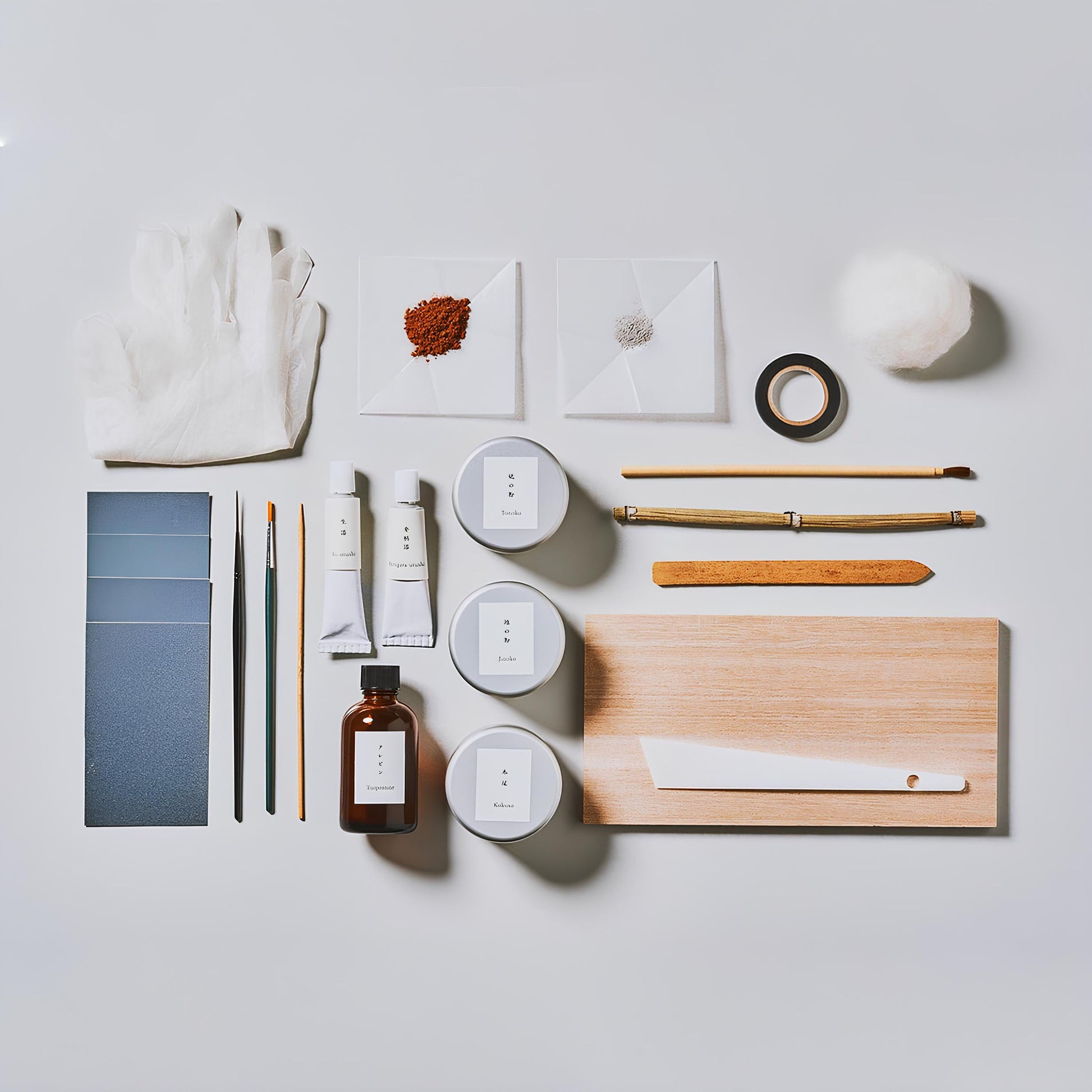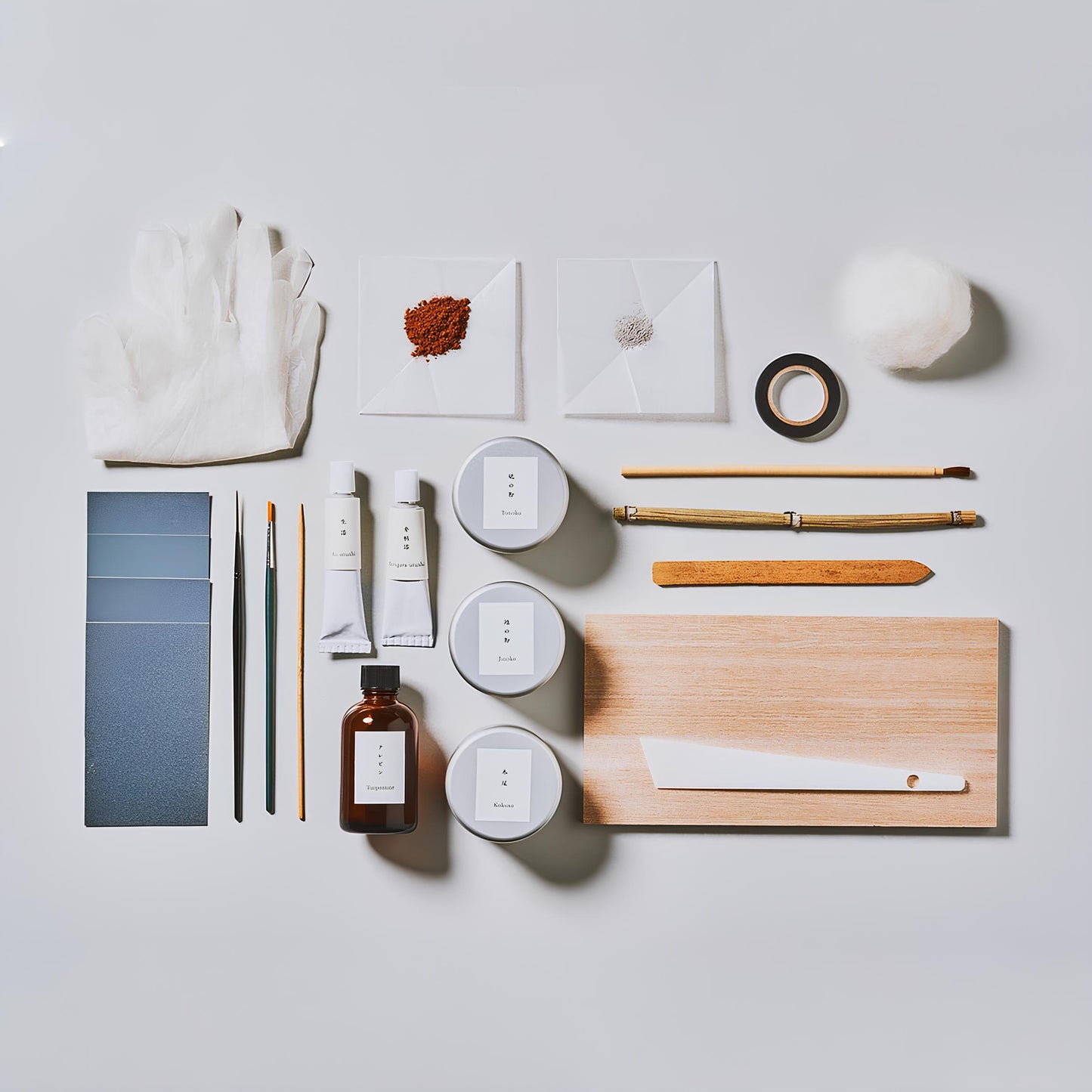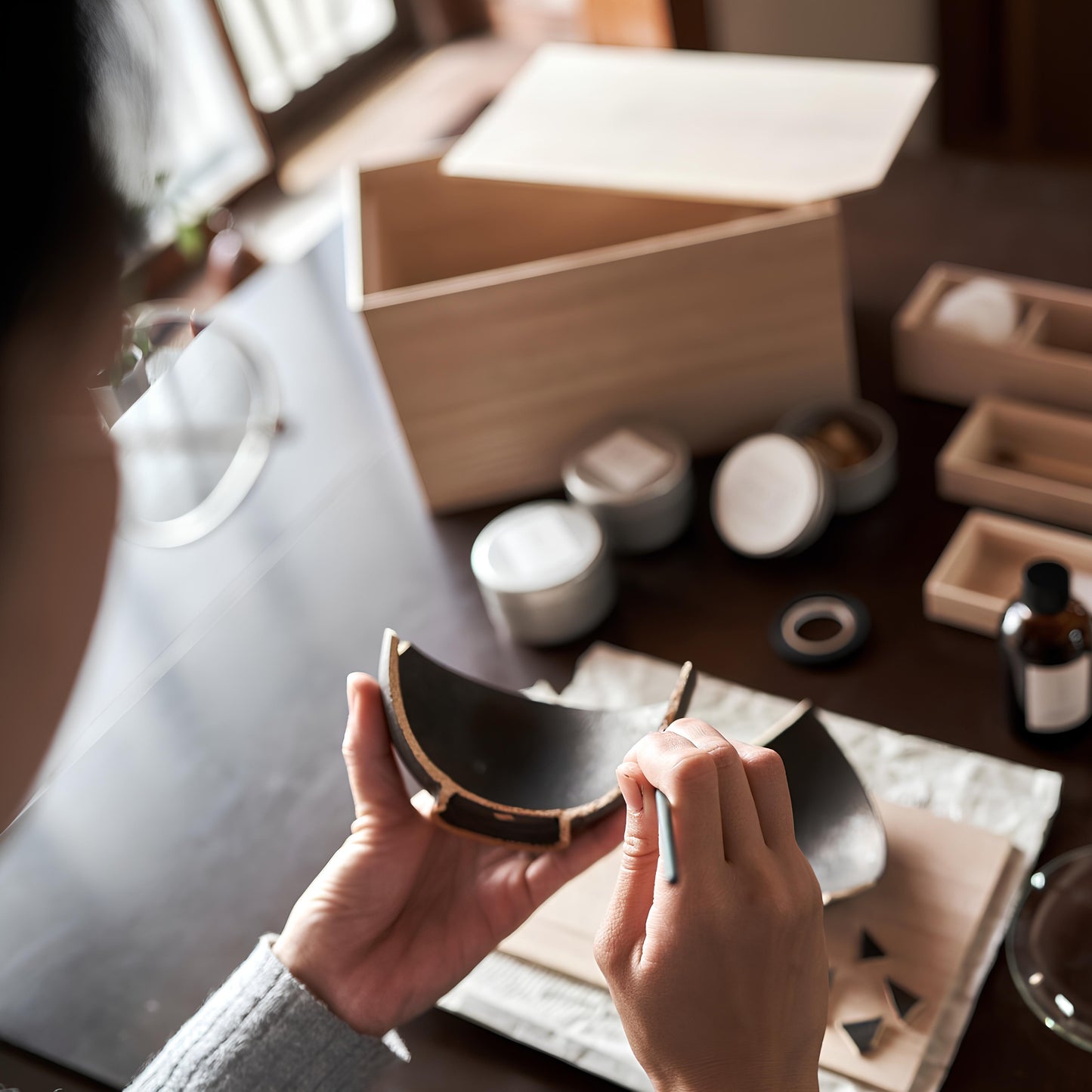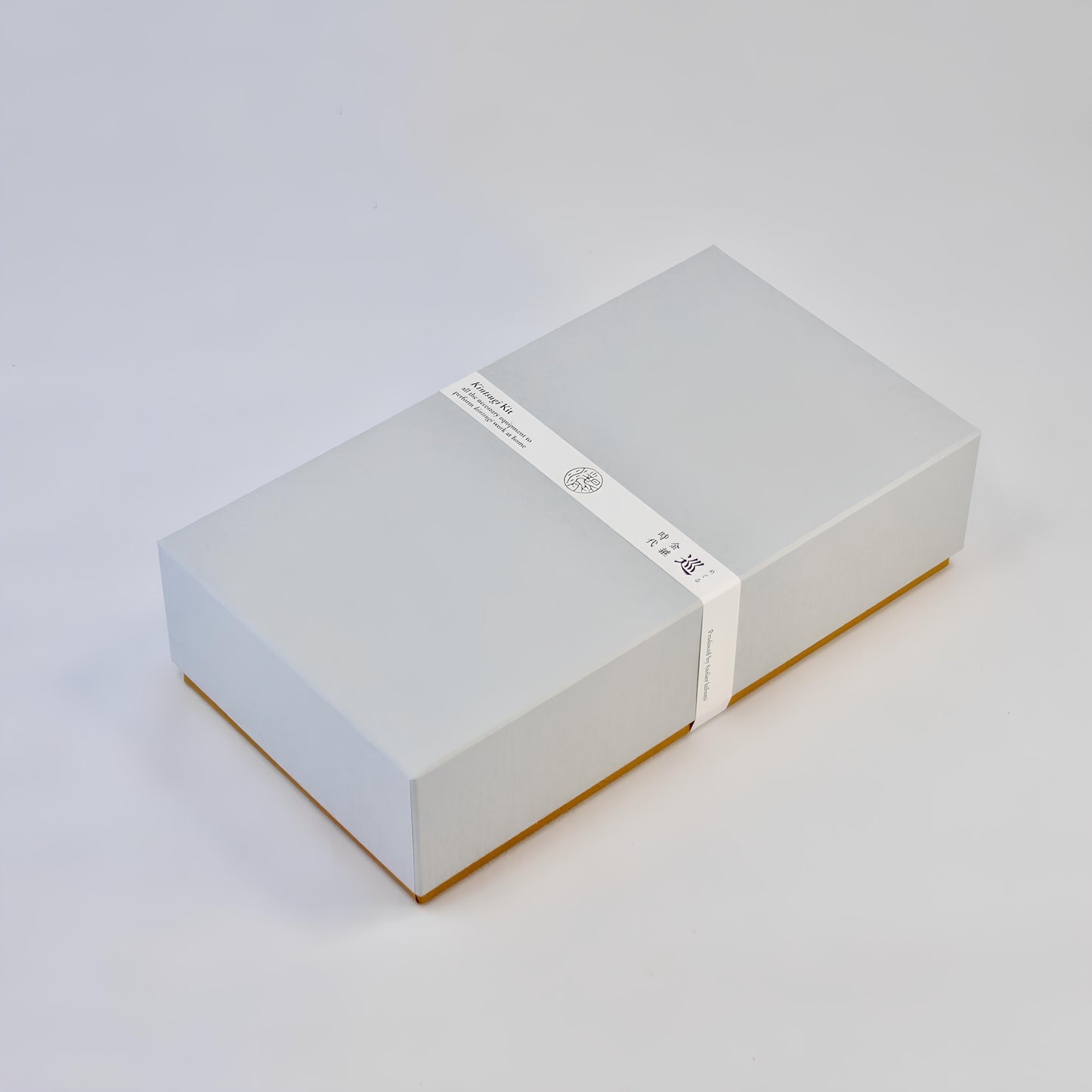Kintsugi, (金継ぎ) also known as "golden joinery", is an exquisite form of Japanese art that involves mending fractured ceramics with lacquer infused with gold or silver dust. Rather than concealing the flaws of the object, kintsugi cherishes these imperfections and perceives them as an indispensable part of its unique story.
Join us as we introduce you to this extraordinary art form that breathes new life into what was once considered 'broken.' Furthermore, we will delve into how you can apply the core principles of Kintsugi to enrich your daily life.
Contents
- The History of Kintsugi in Japan
- Cherishing Possessions by Breathing New Life into Pottery
- How to Begin the Journey of Kintsugi
- In Conclusion
The History of Kintsugi in Japan

Historically, Kintsugi played a significant role in shaping the Japanese perspective on beauty and impermanence. The emergence of this art form during the late 15th century during the Muromachi period coincided with the rise of the wabi-sabi aesthetic, a philosophy that values the transient and imperfect nature of things.

Legend has it that the practice began when the shogun Ashikaga Yoshimasa sent a broken tea bowl to China for repairs. Upon its return fixed with unappealing metal staples, Japanese craftsmen were inspired to find a more aesthetically pleasing solution. This led to the birth of Kintsugi, translating to "golden joinery" or "golden repair." The shattered ceramics mended with precious metals not only showcased the skill of artisans but also reflected a profound cultural shift. Instead of discarding broken objects, these early pioneers in the art form began to view them as valuable artifacts with a story to tell, embracing the idea that flaws contribute to the overall character and history of an item.

In modern-day Japan, Kintsugi continues to be a powerful symbol of resilience and transformation. Beyond its artistic allure, the practice has permeated various aspects of Japanese culture, influencing attitudes toward imperfection and fostering a deeper connection to heritage. The philosophy of Kintsugi extends beyond ceramics to encompass life experiences, emphasizing the beauty in overcoming challenges and acknowledging the scars that contribute to individual and collective narratives.
The art of Kintsugi, with its emphasis on embracing flaws, has become a source of inspiration for personal growth and a reminder that, much like the carefully repaired pottery, individuals can emerge stronger and more beautiful after facing adversity.
Cherishing Possessions by Breathing New Life into Pottery

In the fast-paced era of mass production and consumption, practicing the art of Kintsugi offers a profound counterpoint, inviting us to take a moment to embrace a more mindful and intentional approach to their possessions. At its essence, Kintsugi teaches us to appreciate the imperfections and history embedded in objects, encouraging a shift away from the disposable nature of modern goods. In the face of a throwaway culture, Kintsugi empowers people to mend rather than discard, fostering a sense of attachment to their belongings.

In modern life, the application of Kintsugi principles extends beyond the literal repair of broken ceramics. It serves as a metaphorical guide for acknowledging and celebrating the scars and imperfections in both objects and ourselves as humans. By cherishing the flaws, each object or person becomes a unique reflection of the journey they have been through, creating a more meaningful and sustainable relationship between both each other and their belongings.

Moreover, Kintsugi invites a reconsideration of consumer habits, encouraging a move away from the relentless pursuit of perfection that characterizes mass-produced items. In a world inundated with uniformity, the art of Kintsugi motivates people to seek out or create objects that carry personal significance and to invest time and care in their maintenance. By extension, this includes putting that same effort into the interpersonal relationships we foster with both loved ones and others in our lives. It becomes a testament to the beauty found in embracing the imperfect, the worn, and the well-loved.
In essence, the practice of Kintsugi in modern life is a call to cultivate a more thoughtful and connected relationship with the material world, transcending the fleeting trends of mass consumerism - and to create more meaningful connections with others at a time when it can be difficult to foster lifelong relationships.
How to Begin the Journey of Kintsugi
Embarking on the journey of practicing Kintsugi is accessible and rewarding. Start by exploring introductory books or online resources that delve into the philosophy and techniques of Kintsugi. Familiarize yourself with the key principles, such as embracing imperfections and the art of mending, which form the foundation of this ancient Japanese craft. Engaging with literature and videos on the subject will provide valuable insights into the mindful and artistic aspects of Kintsugi.
Beginner Kintsugi at Home Kits

For those eager to dive into hands-on experiences, beginner at-home Kintsugi kits offer an excellent entry point. These kits typically include the necessary materials, such as epoxy resin mixed with powdered gold or other metals, and tools like brushes and spatulas. With detailed instructions, even those new to Kintsugi can mend and transform broken ceramics, infusing them with newfound beauty and resilience. These kits serve as a tangible and accessible introduction to the art, allowing individuals to practice Kintsugi at their own pace in the comfort of their homes.

One such kit can be found here on omakase - the Kintsugi Starter kit by Atelier hifumi. This stunningly comprehensive kit, direct from Japan, was created by Mio Heki, an artisan who not only has a history in the personal restoration of national treasury buildings and cultural heritage sites but also holds in-person classes both in Japan and worldwide on the art of Kintsugi.
Featuring all the tools you’ll need to get started on your first Kintsugi piece, presented in a beautiful box, and with access to online lessons in multiple languages, this is a perfect starting point if you’re interested in trying this art form.
Kintsugi Classes - Online or In-Person Workshops

If you're seeking a more immersive learning experience, consider exploring online lessons or local resources for in-person Kintsugi classes. Online platforms often offer structured courses led by experienced instructors, guiding participants through various techniques and applications of Kintsugi.
Alternatively, check local art studios or cultural centers that may host workshops or classes, providing hands-on guidance and fostering a sense of community among those passionate about this unique art form.
In Conclusion
Whether you choose to embark on the hands-on journey of Kintsugi or simply carry its timeless concepts into your life, let the essence of this art inspire you to transform setbacks into triumphs and perceive the beauty within every fracture.
Cherish the art of Kintsugi as a metaphor for life – a testament to the resilience and grace that emerges from acknowledging and mending our broken pieces as well as nurturing better connections in our relationships.







